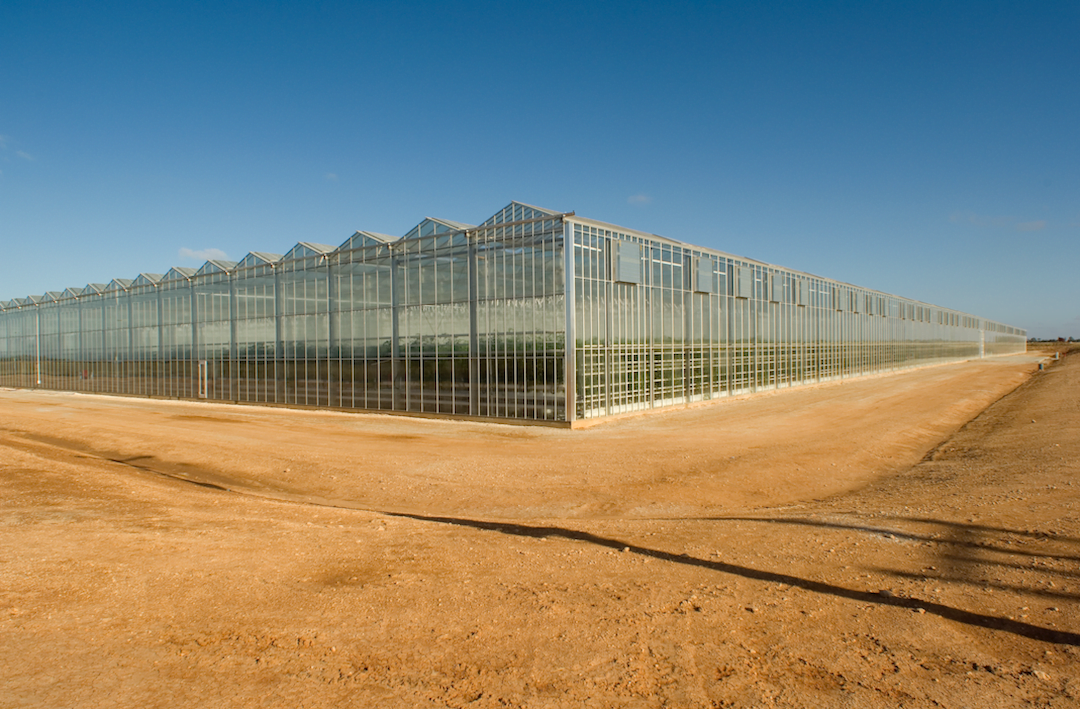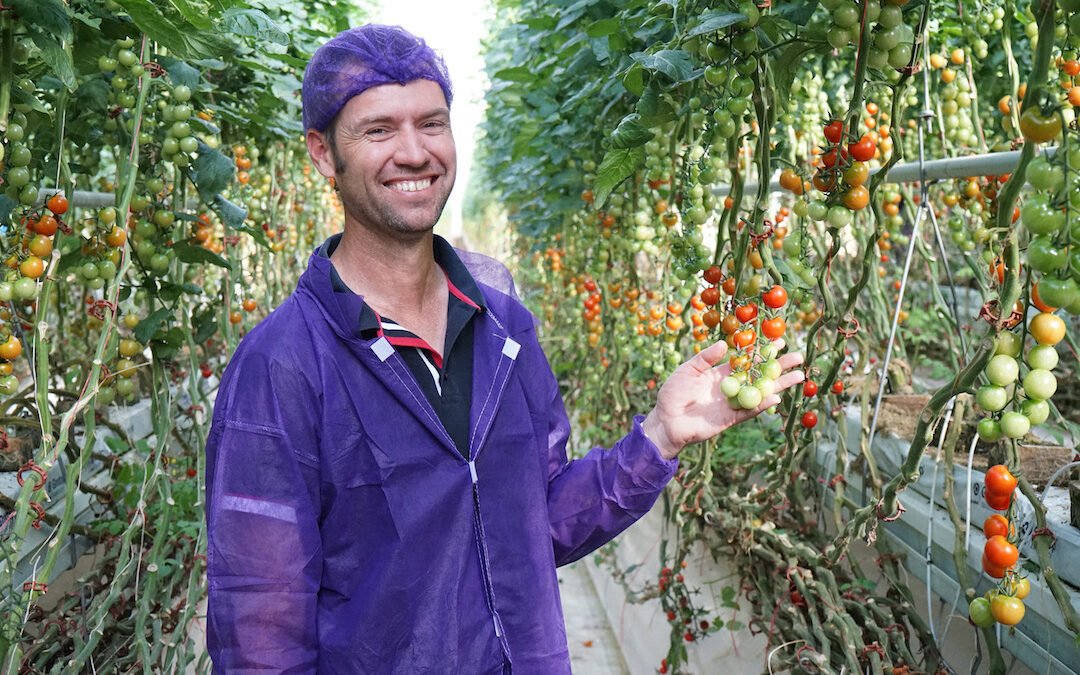From original red to newer dark green and brown varieties, Perfection Fresh is redefining the way we see and eat the humble tomato, thanks to its unique Perfection Two Wells Glasshouse facility in South Australia.
Rows upon rows of colourful fruiting plants grow inside the Two Wells Glasshouse. The produce – various tomato varieties – is grown to be shipped across the country, eventually arriving on the dinner plates of hungry Australians.
Tomatoes sit at around 90 per cent household penetration, meaning they are a popular staple food: think field, cherry and truss tomatoes. And now Perfection Fresh has set the goal of introducing Australians to new and exciting tomato varieties, to reinvigorate the household favourite.

Sweet Solanato tomatoes
You may have seen the fruits of their labour on supermarket shelves already: the Kumato, an authentic robust-flavoured tomato dark in colour; Mix-a-mato, a range of colourful tomatoes varying between sweet and rich; and Romatherapy baby romatomatoes, firm to the touch with a luscious and plush flavour on the bite.
And it hasn’t stopped there. Perfection Fresh has mastered the craft of experimenting with tomatoes in search of new and exciting varieties, using a trial-and-error process to deliver a supreme product to supermarket shelves. There’s even a purple tomato with a natural star formation on its outer skin – although some of these inventions have yet to make it onto our shelves as consumers just aren’t ready for them!
Pollinating and producing
Perfection Fresh tomatoes have an interesting journey before they arrive on your plate, beginning with hand pollination. The glasshouse where the plants grow is a controlled agricultural environment, meaning no bees can enter the facility – so growers must hand pollinate the flowers by shaking the plants.

The Perfection Fresh greenhouse
Charles Hutton is a Grower at Perfection Fresh Australia, and closely monitors the plants each day in the 43 hectare South Australian greenhouse. “We normally just hit them with a stick and spring which sends through vibrations, or we use an electric leaf blower to blow the flowers and that vibrates them enough to make them pollinate,” he explains.
The state-of-the-art facility is the largest of its kind in the southern hemisphere and operates with 24-hour maintenance on site in case anything goes wrong. The temperature must be monitored constantly, along with soil acidity, pests such as whitefly, water consumption and fertiliser. It’s a huge operation.
“We recycle 100 per cent of our water used on site. We have a large roof area, so we can collect a lot of water during winter and store it in our 400 megalitre dams. We also use recycled water from Adelaide which is treated on site during summer for supplementary water. This water is run through irrigation throughout the glasshouse to the tomatoes and collected again, stored and UV treated and remixed with freshwater for use again,” says Charles.
The brand has committed to 100 per cent recyclable, reusable or compostable packaging by 2025. Head of Marketing Luke Gibson says trials of cardboard packaging are ongoing, but it’s a difficult goal as cardboard draws moisture out of produce.
“Generally, people want to see the produce, they want to make sure that it’s great quality before they buy it,” he says. “We don’t have a solution yet, but we have several trials happening to try and find one.”

Charles Hutton, chief grower for Perfection Fresh
“There is a perception that plastic is worse for the environment than paper and that’s not actually always the case,” he continues. “If you can’t achieve the same shelf life and product quality and foods are going to be wasted, that’s actually more harmful than the plastic.”
According to Luke, people derive a lot of value by not wasting produce. Perfection Fresh looks for both produce and packaging that last throughout the entire supply chain from conception to consumption. The longer food lasts, the more value the customer receives.
Picking and packing
Workers at Perfection Fresh pick for 52 weeks of the year. A significant proportion of time is reserved for establishing new plants within the glasshouse. It usually takes seven or eight weeks for a single seedling to start producing tomatoes in Two Wells – a process that would take up to three months in a regular garden. The glasshouse has both summer and winter plantings so fresh tomatoes can be delivered Australia-wide 365 days of the year.

Outside the Perfection Fresh glasshouse
“When we first started, we weren’t big enough as a company to be able to deliver a consistent supply,” says Charles.
“Once a business reaches a certain size you can ensure all your customers are happy as they don’t have to worry about declines in the supply chain.”
As for the name Perfection Fresh, Charles and his colleagues pride themselves on delivering only the best quality tomatoes. That’s why on the day they are picked, they are also packed and sometimes even shipped off on trucks, depending on supply and demand.
Charles lives and breathes agriculture, having studied the subject at university and now working in the industry. He’s a tomato expert, and he vouches to have seen the whole process happen in one day.
“We picked in the morning and by that night they were leaving on the truck. For some varieties, such as the Mix-a-mato, this isn’t necessary, as they have a very good shelf life – I’ve kept some up to 20 days.”
Fascinated by the work of Perfection Fresh? Find out more about how to reduce food waste here.

